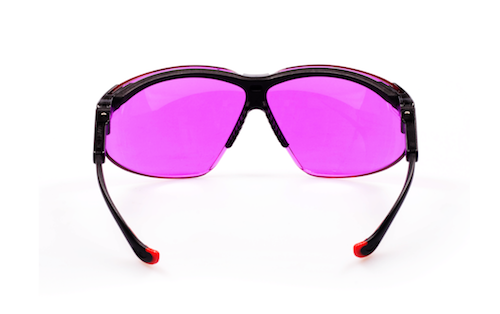If you look at the demographics for both hunters and those Americans who are colorblind, there’s a correlation. The majority of hunters in the U.S. are white males; the majority of people with color blindness are also white males.
According to the National Eye Institute, “men are much more likely to be colorblind than women because the genes responsible for the most common, inherited color blindness are on the X chromosome. Males only have one X chromosome, while females have two X chromosomes. In females, a functional gene on only one of the X chromosomes is enough to compensate for the loss on the other.”
And since white males are most at risk for color blindness, some in the hunting community are taking notice of the research and technology available to colorblind hunters. With the right eye tech, color vision deficiencies can be improved or remedied to erase the disadvantages colorblind hunters cope with.
In a blog post featured on NRAFamily.org, Col. Kenneth Haynes (Ret.) wrote about the difficulties of hunting while colorblind.
“I hunt deer, and as a ‘strong deutan’ (which means I have lots of trouble with red and green), I often don’t know what color I am seeing. Green, brown, yellow, orange, red, blue and purple all give me trouble, and it's worse in low light — which is, naturally, when a lot of hunting and tracking takes place, at dawn and dusk.”
Colorblind tech for hunters and how it works
You see color when your eye’s cone cells sense different amounts of these three primary colors: red, green or blue. Color blindness is caused when one of three types of cone cells in the retina of the eye are

New technology featured in the colorblind lenses made by VINO Optics actually enhances the signal red-green vision is for so that those with weak red-green vision can see that signal better.
either absent or don’t work. Typically, eyewear designed for those who are colorblind uses filters to correct color blindness. But new technology featured in the colorblind lenses made by VINO Optics actually enhances the signal red-green vision is for so that those with weak red-green vision can see that signal better.
The eyewear is not only being marketed to hunters, but other outdoorsmen as well.
Here's an excerpt from VINO Optics marketing materials:
“Hunters, trackers and fishermen who are colorblind are at a disadvantage since it is harder for them to track wounded prey or see into water, especially during times of day when light is at its lowest — dusk and dawn — prime time for hunting and fishing. (Colorblindness) is also a safety issue if colorblind hunters are not able to see other hunters clearly."
Colonel Haynes, the NRA blogger, can see and distinguish blaze orange well, even at a distance. But that’s not the case for everyone who suffers from color deficiencies. “If you hunt with (someone who doesn’t see hunter orange), wear a color they can see. If your local hunting ordinances allow it, try international safety yellow or fluorescent yellow-green (chartreuse). The more fluorescent, the better we can see it.”
And while the technology featured in VINO Optics offers a new approach to colorblind eyewear, there are other solutions hunters might consider.
Dr Raymond J Brill, an optometrists in Mission, Kansas, said several options are available to hunters with color blindness. “I work with many colorblind patients from the surrounding states. We carry Enchroma (another eyewear brand in the colorblind space). For blood tracking, I just fit someone with special green-tinted soft contacts. He said they work great.”
Featured image: John Hafner






